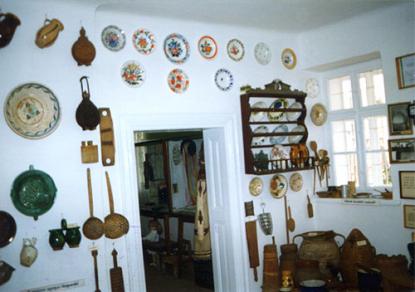2024. April 27. Saturday
Region Historical Town Museum - Szigetszentmiklós
|
|
Address: 2310, Szigetszentmiklós Árpád utca 34.
Phone number: (24) 368-264, (30) 262-1660
Opening hours: 01.04-01.11.: Sun 14-17
On prior notice: beyond the opening hours as well (tel.: 24/ 367-100) |
The region of the town had been inhabited since the prehistoric times. During plowing and other land labours the villages, cemetaries, pots and other relics of the prehistoric people have been continually excavated for about the last 100 years. According to the testimony of the relics the isle has been inhabited for about 6000 years.

The oldest traces and findings lead us back to the stone age: axes, knives, utensils and stove remains have been discovered. The iron age relics were found in the Béke street. The living basins of the Celts were discovered at the foot of the bridge of the Czuczor island. Copper age and bronze age items have also been excavated. The remains of the Sarmatans were found in the Losonczi street. The Roman-age inscripted rocks originate from the local Calvinst church.
The Avarians settled in the island in 568. Valuable 6th and 7th century jewelries and items were found in the Hárosi-field. From the area of the current public cemetary items originating in the 10-12th centuries were coming to our museum.
The village was first mentioned in a document dated at 14th October 1264. In 1546 there were 92 tax paying Hungarian families in the village. After the chasing out of the Turks, in 1700, only 45 families were listed, but later the village was reinhabited. In 1768 the number of the families in the then Calvinist village shot up to 136.
The hourly spates, tuzvészek went on a visit also may not be the village- the legnagyobb icy spate 1838-ban zúdult the station: this 152 house got elpusztult. The margin tagosításakor (1862), however, the lakihegyi imperial and king lordship földjébol soil.
The village was often facing floods and fires. The largest icy water was overwhelming the settlement in 1892. 152 of the houses were destroyed then.
The local train system (HÉV-1892) proved a great advantage in the life of the village, for through the train the settlement was connected to the capital. Workers began to go to the factories in Pest and the farmers started selling their products there. The Car Factory bagan building the local houses estate in 1951.

The oldest traces and findings lead us back to the stone age: axes, knives, utensils and stove remains have been discovered. The iron age relics were found in the Béke street. The living basins of the Celts were discovered at the foot of the bridge of the Czuczor island. Copper age and bronze age items have also been excavated. The remains of the Sarmatans were found in the Losonczi street. The Roman-age inscripted rocks originate from the local Calvinst church.
The Avarians settled in the island in 568. Valuable 6th and 7th century jewelries and items were found in the Hárosi-field. From the area of the current public cemetary items originating in the 10-12th centuries were coming to our museum.
The village was first mentioned in a document dated at 14th October 1264. In 1546 there were 92 tax paying Hungarian families in the village. After the chasing out of the Turks, in 1700, only 45 families were listed, but later the village was reinhabited. In 1768 the number of the families in the then Calvinist village shot up to 136.
The hourly spates, tuzvészek went on a visit also may not be the village- the legnagyobb icy spate 1838-ban zúdult the station: this 152 house got elpusztult. The margin tagosításakor (1862), however, the lakihegyi imperial and king lordship földjébol soil.
The village was often facing floods and fires. The largest icy water was overwhelming the settlement in 1892. 152 of the houses were destroyed then.
The local train system (HÉV-1892) proved a great advantage in the life of the village, for through the train the settlement was connected to the capital. Workers began to go to the factories in Pest and the farmers started selling their products there. The Car Factory bagan building the local houses estate in 1951.
